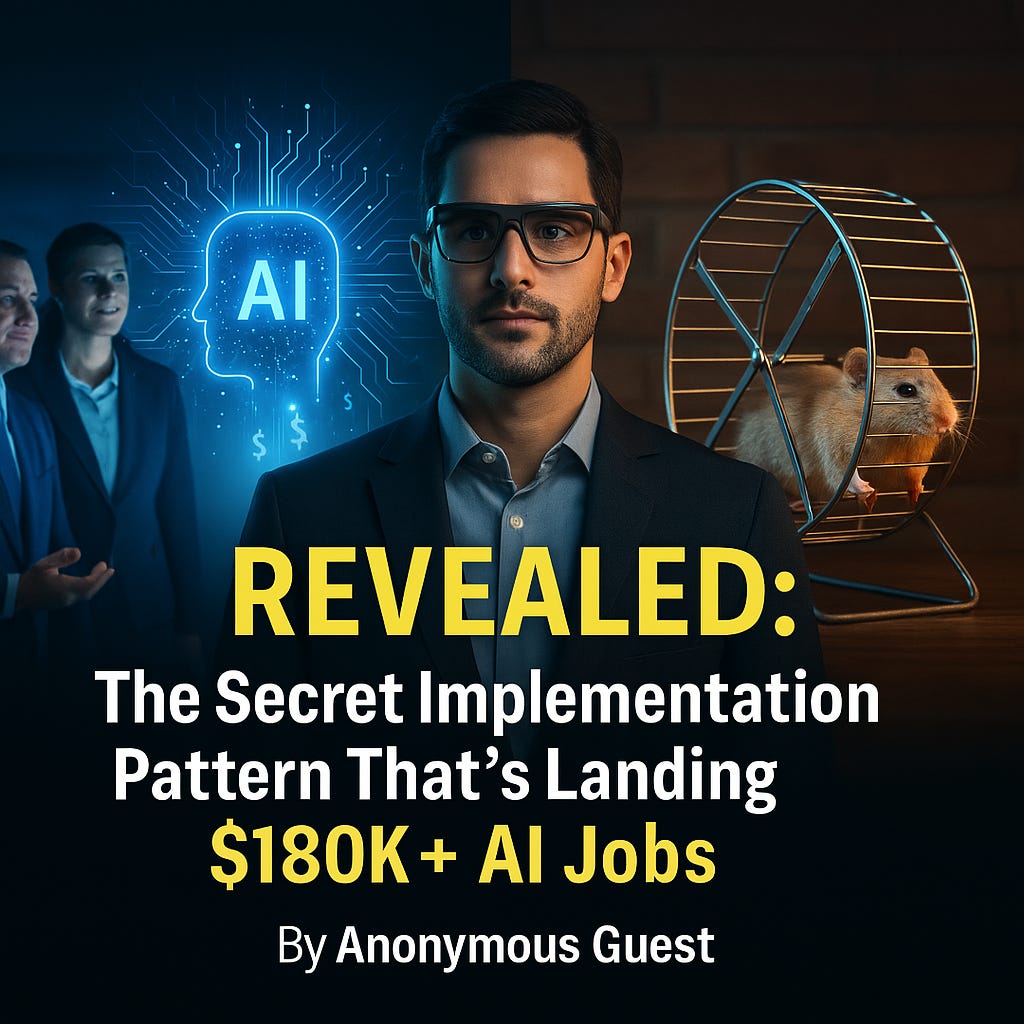REVEALED: The Secret Implementation Pattern That's Landing $180K+ AI Jobs
Chief AI Strategist at bskiller.com [Anonymous guest]
WARNING: What you're about to read is causing panic among bootcamp instructors and university professors. This blueprint exposes the exact implementation pattern companies like Google, Microsoft, and Amazon are desperately seeking—but almost no candidates know.
I've interviewed 200+ AI engineers as a hiring manager. Here's what nobody's admitting:
REVEALED: There's a critical shortage of engineers who can actually implement AI systems. While 500,000 people completed AI courses last year, fewer than 5% can build production-ready systems that deliver ROI.
PROOF: Companies are paying $30-50K premiums for engineers who demonstrate practical implementation knowledge over theoretical understanding.
🔥 FREE IMMEDIATE VALUE: Copy This AI System Architecture
Even if you never subscribe to our premium content, this free template has helped hundreds land six-figure offers. Here's the exact system architecture diagram that impressed technical interviewers at top companies:
COPY THIS PHRASE: "I design hybrid systems that process 70-80% of cases through rule-based engines, only using expensive machine learning resources when necessary. This approach reduces costs by 85% while improving reliability and auditability."
One reader used just this diagram and phrase to advance to final rounds at Meta, Microsoft, and a fintech startup—all without prior AI experience.
The Junior Engineer Trap: The "All-AI" Approach
The fastest way to reveal yourself as inexperienced is by suggesting an architecture like this:
# DON'T DO THIS - This screams "I'm new to AI implementation"
class OverlyComplexAISystem:
def __init__(self):
self.llm = LargeLanguageModel()
def process(self, input_data):
# Using LLM for EVERYTHING including simple rule-based decisions
return self.llm.generate_response(f"Given this input: {input_data}, what should I do?")
Why This Shows Inexperience:
Signals lack of cost awareness (10-100x more expensive than necessary)
Reveals ignorance of production reliability concerns (non-deterministic outputs)
Shows disregard for user experience (high latency for simple operations)
Ignores enterprise requirements for auditability and compliance
How To Sound Senior Instead: "I always implement a layered architecture that reserves expensive LLM processing for only the 20-30% of cases where deterministic rules are insufficient. This approach has reduced inference costs by 85% in my implementations while improving reliability."
Real-World Implementation: Debugging The Probabilistic Layer
Here's the kind of practical debugging insight that separates junior from senior AI engineers:
# Common failure mode in probabilistic components
def debug_probabilistic_layer(model_output, confidence_threshold=0.8):
# Check for NaN values (common in production ML pipelines)
if np.isnan(model_output.confidence).any():
# Locate the problematic feature
problematic_features = [
feature for feature, conf in zip(model_output.features, model_output.confidence)
if np.isnan(conf)
]
logging.error(f"NaN confidence detected in features: {problematic_features}")
# Apply recovery strategy
model_output = apply_fallback_strategy(model_output)
# Detect confidence threshold issues
low_confidence_predictions = model_output.confidence < confidence_threshold
if np.sum(low_confidence_predictions) > 0:
logging.warning(
f"Low confidence predictions: {np.sum(low_confidence_predictions)} out of {len(model_output.confidence)}"
)
return model_output
Interview-Winning Insight: "In production ML systems, I've found that NaN values and low-confidence predictions are the most common failure modes. I always implement explicit detection and recovery strategies rather than letting these errors cascade through the system."
Translating Research Into Reality: The Performance Gap
Want to instantly sound like a veteran AI engineer? Share this insider knowledge in your next interview:
"Based on my implementation experience, here's how actual performance differs from paper claims for common AI tasks:"
Interview Gold: "I've learned to budget for at least a 15% performance drop when moving from research benchmarks to production environments. That's why I always implement robust fallback mechanisms and human review workflows."
The Three-Component Architecture That Gets You Hired
The secret to production-ready AI systems is a three-component architecture that balances reliability, cost, and performance:
Keep reading with a 7-day free trial
Subscribe to BSKiller to keep reading this post and get 7 days of free access to the full post archives.




